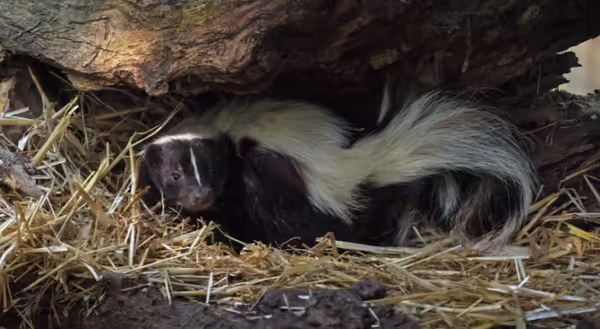
When people get excited about supporting wildlife on their property, they are usually referring to charismatic wildlife. The ones that bring us joy or whimsy or that serve a function such as pollination. Or even the ones that encroach on our lives the least.
For most of us, that is in the form of a black swallowtail butterfly, a bright red cardinal, or even the bumble bee as it visits your favorite brightly colored native flower. But that sense of awe and wonder with nature tends to become annoyance and even fear when a stinky skunk is agitating your dog, an irksome mole is digging through the precious roots of your garden, or when the wily coyote trots through your yard.
These less than charming species tend to get a bad rap on our neighborhood Facebook pages and makes some folks look for the quickest and most extreme solution to eliminate “pests” from their property. As Master Natuarlist volunteers, and partners, we know that there are better solutions and sometimes we need to learn a little bit more about these species to truly appreciate their purpose and value to our ecosystems.
Coyotes in Chicagoland
Let’s start with the coyote. As one of our largest predators in Illinois, this species can be intimidating and scary for those who are not used to this mammal and who have small pets. But coyotes serve the essential predator role in our urban ecosystems.
A lot of research has gone into studying the Chicagoland coyote population through the Urban Coyote Research Project. Contrary to popular belief, urban coyotes do not primarily (or even secondarily or tertiarily) eat pets and garbage. When investigating scat samples across the Chicagoland area, researchers found it consisted of mainly small rodents, fruit, deer, and rabbit. Coyotes serve great value to our urban ecosystem by controlling small rodent populations. Research has shown that when removing coyote populations, there is a dramatic increase in rodent abundance, but a decrease in rodent diversity. Meaning, that only a few species of rodents will increase and crowd out other rodent species.
Coyotes also serve as biocontrol for urban geese as they have been found to be a major predator of nests – something that has allowed the Chicagoland goose population to grow at a slower rate than scientists expected.
Moles help soil health
Another species that tends to get a bad rep is the lowly, ground-dwelling mole. Gardeners go crazy over the tunnels they dig and the roots of new plants that are displaced by these burrowing mammals.
However, this creature provides essential soil aeration and mixing as it creates trail systems through the soil. Additionally, they are an essential control of grubs, worms, and insects that may otherwise consume your favorite plants. An overabundance of worms on your property can produce slimy, mucky soil that provides little value to the plants, therefore control of even earthworms is essential to a healthy ecosystem.
Debunking skunks
Our last “pesky” wildlife is the lowly skunk. This animal is known for its scent production and is often considered a nuisance by pet owners. But a curious pup that got sprayed may not have gotten the hint since skunks will not spray unwarned. They will first stamp their feet and even bare their teeth before they raise their tail. And even when they raise their trail, there is time to take the hint.
Similar to the mole, the skunk is a valuable piece of our ecosystem. These striped friends serve as a natural control to insects and other garden pests. They are considered omnivores and prefer insects, but will also eat mice, rats, and other small wildlife if the opportunity arises. They can also eat corn, berries, and other vegetation.
Building a landscape with the environment and conservation in mind means seeing the whole ecosystem. As the entomologist and author Doug Tallamy often discusses, you cannot have butterflies without caterpillars. And you cannot support a healthy ecosystem without supporting the whole food chain – predators, prey, and all.
Explore more about the wildlife mentioned here and others at Wildlife Illinois.
Have a question about wildlife? Contact your local Extension office at go.illinois.edu/ExtensionOffice.
MEET THE AUTHOR: Abigail Garofalo is an Energy and Environmental Stewardship Educator for Cook County. She manages the Cook County Master Naturalist program and the Conservation@Home program for University of Illinois Extension. She has a BS in Natural Resources and Environmental Sciences and MS in Agricultural Leadership Education both from University of Illinois Urbana Champaign. Her background in is environmental outreach and interpretation and works to create a culture of environmentalism through community building.
ABOUT THE BLOG: Naturalist News is a blog by University of Illinois Extension Master Naturalist staff and volunteers who bring you stories highlighting the individuals, places, wildlife, and plants that make this state amazing. Join us each week to learn something new, be inspired and become connected to your own community by recognizing the amazing ways we are all intertwined. Want to get notified when new Naturalist News posts are available? Sign up here!